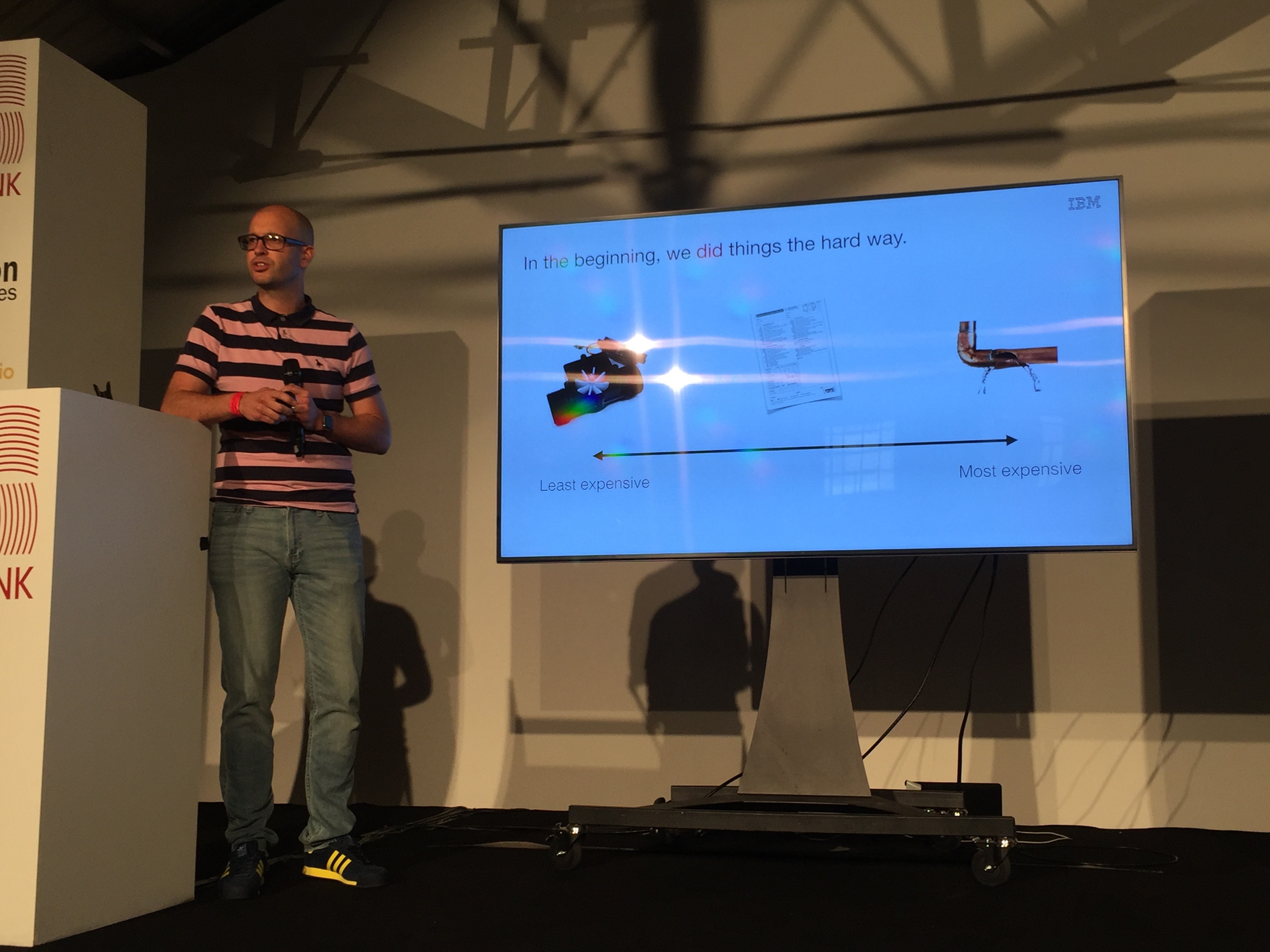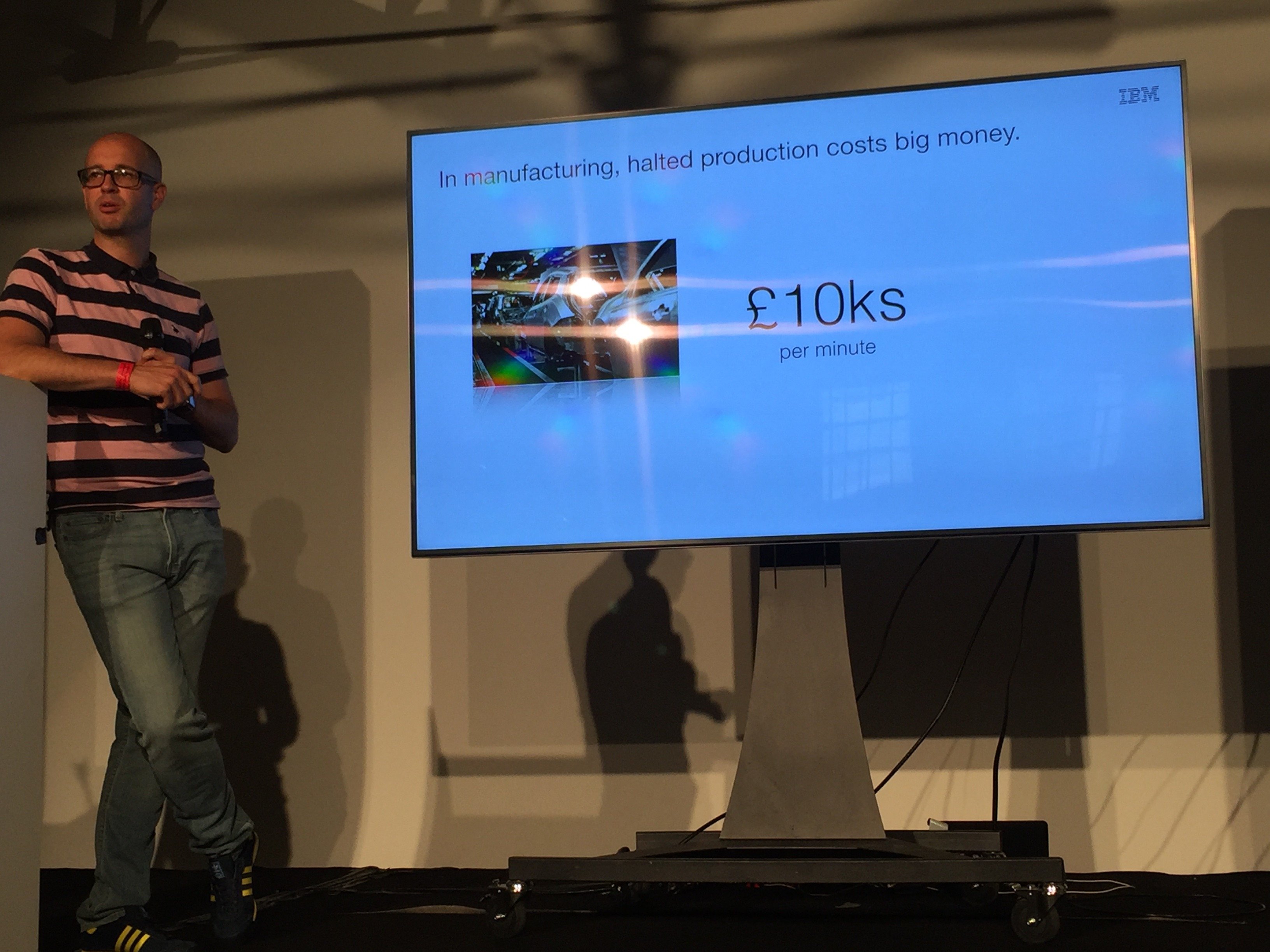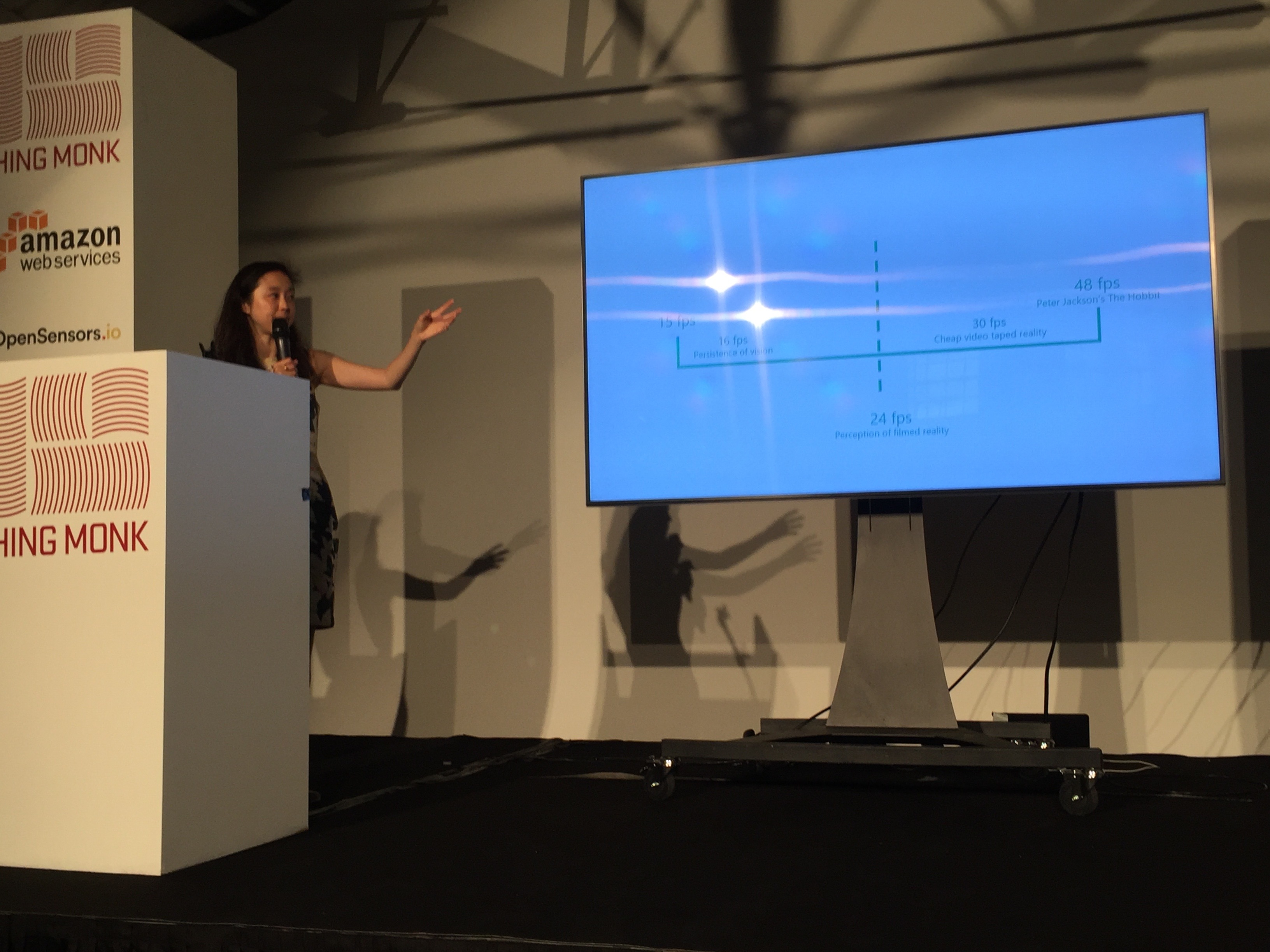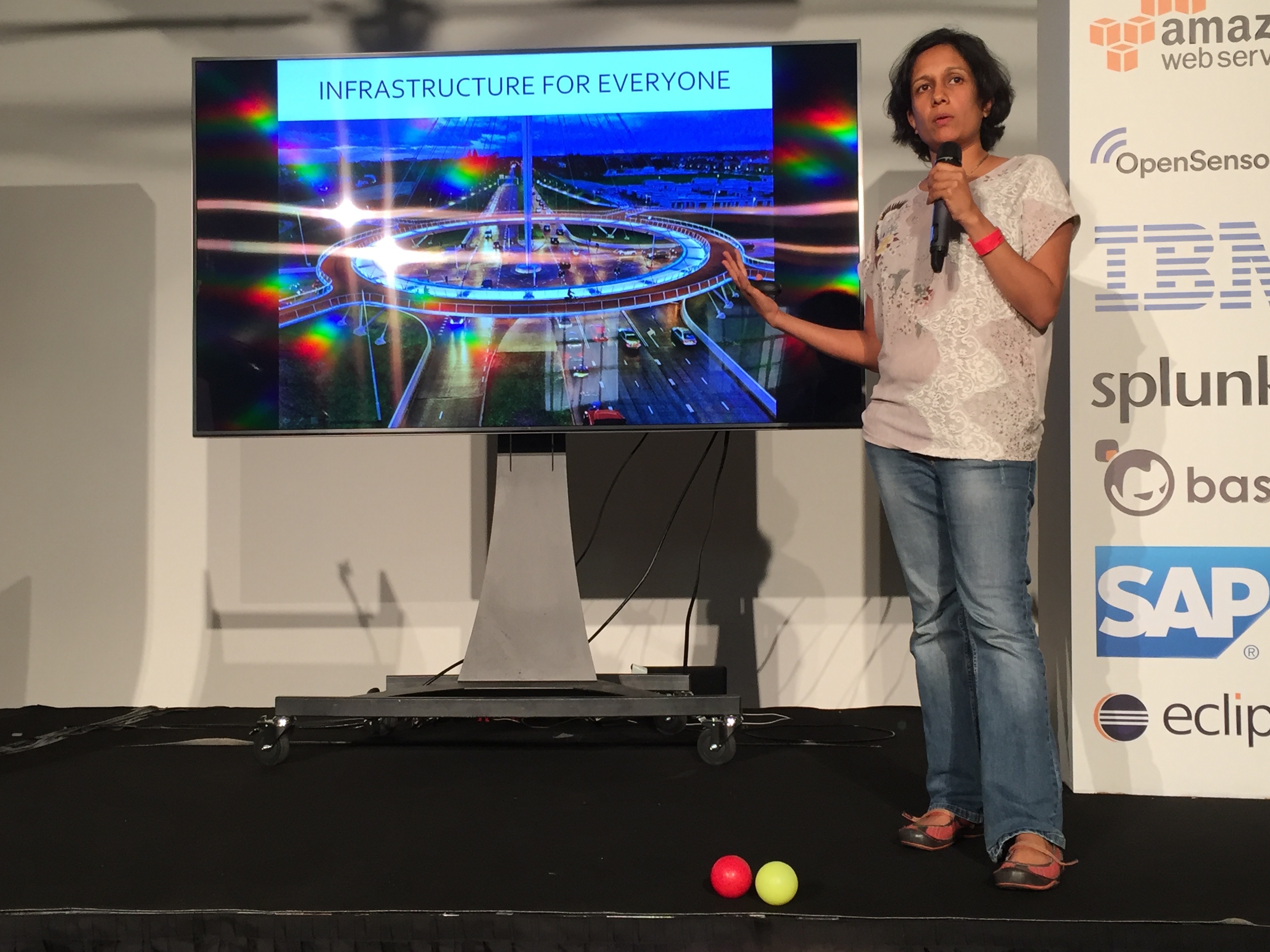Commentary on some of the interesting numbers from ThingMonk Day 1

(Photo credit: Flickr/morebyless under CC-BY 2.0)
£10K
Martin Gale spoke about how IoT in general and edge computing specifically can change the way we do maintenance. Martin described maintenance as a spectrum that ranges from a) not fixing things until they break to b) performing scheduled maintenance whether it’s needed or not to c) monitoring equipment and performing maintenance as the need arises. Maintenance becomes 10x less expensive as you move from A-to-B and 10x less expensive again as you move from B-to-C.
Furthermore, he gave the practical example of the costs an auto manufacturer incurs when there is a mechanical failure. Stopped production can cost a factory £10K/minute. Even worse, many manufacturers can go offline for 5-10 minutes/day without fully understanding the root causes.
IoT and edge computing can help manufacturers measure and track their equipment to better predict when maintenance is required. Furthermore, IoT has the opportunity to not only address immediate situations but can actually help create long-term solutions towards designing systems that need less maintenance overall.
24
Haiyan Zhang introduced a delightful concept called “thresholds of truth.” A threshold of truth is the point at which an interface becomes convincing to users. An example is the frame rate in movies. When frame rates move too far from 24 frames per second it harms the brain’s ability to perceive the film as reality. (Interestingly, this occurs both when the frame rates are too slow and too fast.)
Small alterations to behaviors of a system can dramatically change human response to the system. People do not perceive changes to an interface linearly, and therefore making small adjustments to things like response time of a technology can have vast impacts on user experience.
There are many possibilities about how to make incremental improvements in IoT technology. Changes in visual perception, touch response, program latency, and conversational ability are all areas where designers can make small changes that yield large improvements in usability.
7
Tracy Miranda gave an excellent talk about the seven habits of highly diverse communities. Her principles included:
- be self aware (who is and not in the community? what privileges are needed to be part of the community?)
- promote shared values (shared values create a shared language. we should work towards promoting respect, but we should also work to extend our shared values to include things like empathy, tolerance and patience.)
- learn and grow together (change happens rapidly)
- be open and inclusive (be transparent and accountable)
- give everyone a voice (sometimes this means speaking up, and sometimes this means shutting up)
- acknowledge bias (understand your blind spots, and beware of attribution error where people are credited/discredited for the conditions of their environment)
- invest in equality (in terms of time, money, and energy)
0
The approximate number of times I paused during my talk. (I was a very nervous first-time presenter and virtually flew through my talk.)
I couldn’t have asked for a better and more supportive crowd to have given my first presentation to. Nevertheless, I’ll be sure to publish both my slides and a full write up for those of you who prefer to learn about the economics of IoT in a method that is not effectively a 12-minute long single sentence. 🙂
Thanks to both James and Fintan for providing me with the venue to talk. And many, many thanks to the amazing ThingMonk attendees. I value your support, encouragement, and engagement!
Disclosure: Eclipse, IBM, AWS and RedHat are all RedMonk clients as well as ThingMonk sponsors.




James says:
September 13, 2016 at 12:55 pm
Rachel–thank you for another great “by the numbers” post. I love this series.
Question: in the context of video games, I seem to hear frame rate described with a “higher is better” attitude. Any chance the Haiyan Zhang talk addressed why (or whether) that might be true?
Rachel Stephens says:
September 13, 2016 at 1:42 pm
Thanks, James! Haiyan’s talk didn’t directly address video games, but it did touch on The Hobbit’s 48 frames/second.
I think the below article has some interesting discussion on our perception of frame rate as it relates to the history of tv/movies. I am by no means a video game expert (or even novice, really!), but maybe the difference in context/history has an impact? http://www.tested.com/art/movies/452387-48-fps-and-beyond-how-high-frame-rates-affect-perception/
James says:
September 15, 2016 at 4:45 am
Thanks for the excellent link! It sure sounds like the current 24 fps magic number as a “threshold for truth” is contingent, and it will be interesting to see how/whether/when we can change that in different media.